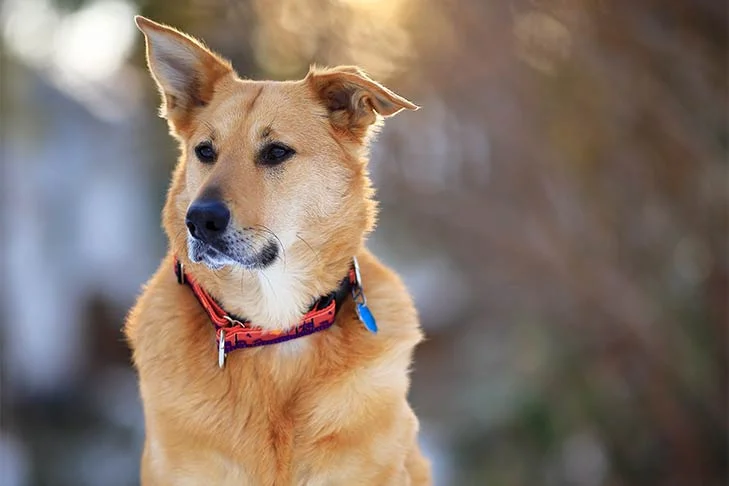Adventurer and polar explorer Arthur Treadwell Walden of Wonalancet, New Hampshire, developed the Chinook. The 24-year-old New Englander traveled to Alaska during the height of the Gold Rush in 1896 due to his wanderlust. Walden traversed the Klondike for six years as a prospector, stevedore, logger, riverboat captain, and—most significantly—a sled-dog driver.
By the time Walden arrived home, he had become a dedicated musher who was determined to create his own line of sled dog breeds. Walden employed a mastiff-like dog and offspring of one of Admiral Robert Peary’s Greenland huskies as his foundation stock. The puppies he produced were admired for their all-around sledding prowess as well as their amiable, loving personalities. Chinook, the sled team’s lead dog, inspired Walden to give the breed that name. This dog was the ancestor of the breed, and all Chinooks can be traced back to him (the word “Chinook” is Native American for “warm wind”).
Walden and his new breed gained notoriety in the sledding community as a result of his breeding program’s outstanding success. Len Seppala and his Siberian Huskies, who gained fame for their 1925 “Serum Run” to Nome, Alaska, quickly overshadowed them, though.
The renowned 1928 Antarctic expedition led by Admiral Richard Byrd included Walden and his Chinook squad. The tenacity of the 58-year-old Walden and his 11-year-old lead dog, Chinook, left Byrd in awe. In two trips covering a distance of 16 miles each, Walden’s single team of thirteen dogs transported 3,500 pounds of goods, the author stated. The core of our conveyance was Walden’s group.
While attempting to save his wife from the fire that ravaged their Wonalancet farmhouse, Walden perished in 1947. The breed he developed had a sharp decline in population over the years, almost going extinct. With only 125 known specimens, the Chinook was recognized as the rarest dog breed by Guinness World Records in 1965. Prior to devoted Chinook aficionados from all over the world quietly bringing the breed back from the brink, that number fell much lower.




 Health
Health Grooming
Grooming Exercise
Exercise Training
Training Nutrition
Nutrition